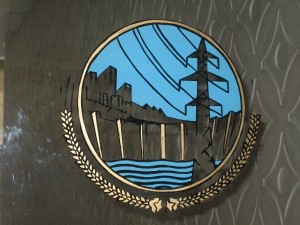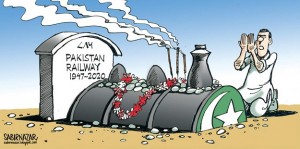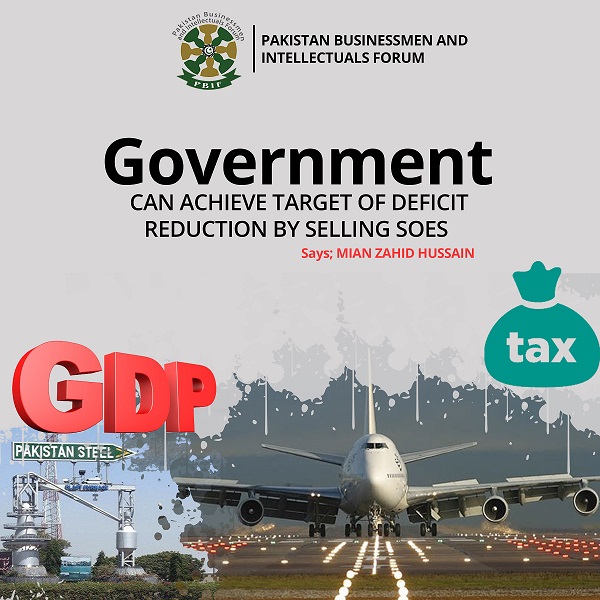Economic Crunch and Sinking SOEs
M.H. Rehman
Significance of economic stability for any country cannot be overemphasized, and in the presence of a constant drain on an economy, no matter how strong, economic stability will always remain a dream. Systemic fault lines in an economy—and that too formed and forged on political considerations—can tumble the whole economy if not addressed on war footings. The economic quagmire Pakistan finds itself in for the last many years has a lot to do with huge drain on an already constrained fiscal space by the sinking State-Owned Enterprises (SOEs). This is a multiple-edged sword, which, by taking a significant chunk of federal expenditure away from productive uses, deprives the economy of much-needed breathing space and value addition.
Economic crisis of Pakistan is neither new nor simple. It is a result of accumulation of problems over the last three decades in wide-ranging areas from mismanagement to corruption, neglect of innovation in agriculture sector to criminal apathy towards efficient storage and use of water, and rapid population growth to failure in making the population productive through sufficient industrialization. The country is home to one of the most rapidly increasing populations around the world. No matter what the government may do, resources and opportunities will always be outpaced by the number of mouths to feed and number of people seeking employment, if population keeps growing at such high rates.
Economic challenges are a combination of these problems plus other factors. Country’s economy is heavily dependent on political situation, which more often than not remains precarious. In the absence of economic foresight, no hesitation in preferring petty, short-term political gains over significant and long-term economic problems, focus on party politics rather than on larger national interest and sheer lack of capacity to understand complex economic dynamics, those at the helm of affairs have done more harm to the national economy by their shortsighted decisions than one could imagine. Huge domestic and international borrowing to finance showy yet inefficient projects only to gain political mileage is one such shortsighted decision, and cramping thousands of political workers into SOEs in the name of providing jobs is another.
The former has led to a situation where 55 percent of the total federal budget for FY 2019-20 was consumed by interest payments and repayments of loans, with interest payments constituting more than 72 percent of these payments, which means repayments of loans is nowhere in sight in foreseeable future. Put simply, this means that only 45 percent of the total budget was, effectively, available to run the country. In the Budget 2020-21, repayment of foreign loans stands at zero due to concessions by international donors and financial institutions owing to Covid-19 pandemic; however, interest payments have gone up. How hard is it to understand that a country’s survival in only 45 percent of its budget is under serious threat? Or to imagine how good it would be if the country could utilize 100 percent of its budget, for that matter.
The latter exacerbates the situation further and contracts an already dwindling fiscal space to the point where it becomes suffocating. Minister for Industries and Production, Mr. Hammad Azhar, informed the Senate of Pakistan on 6th June 2020 that the accumulated losses of the state-owned enterprises (SOEs) had exceeded the annual defence budget outlay. He held the previous visionless, regressive and backward governments that made huge inductions in these SOEs responsible for the fiasco.  While aggregate figures of losses of SOEs are not provided in any official documents, figures of defence budget outlay are. For FY 2019-20, expenditure on defence affairs and services stood at Rs.1153 billion and with addition of Rs.327 billion of military pensions, the total comes to Rs.1480 billion. Assuming that losses of SOEs exceeded the defence budget just marginally, it would be around Rs.1500 billion for the year. Yes, Rs.1500 billion just for one year! These Rs.1500 billion make 20.6 percent of the total budget figure of Rs.7293 billion for FY 2019-20.
While aggregate figures of losses of SOEs are not provided in any official documents, figures of defence budget outlay are. For FY 2019-20, expenditure on defence affairs and services stood at Rs.1153 billion and with addition of Rs.327 billion of military pensions, the total comes to Rs.1480 billion. Assuming that losses of SOEs exceeded the defence budget just marginally, it would be around Rs.1500 billion for the year. Yes, Rs.1500 billion just for one year! These Rs.1500 billion make 20.6 percent of the total budget figure of Rs.7293 billion for FY 2019-20.
According to some media reports, the debt and liabilities of SOEs, including domestic and foreign, had gone up to Rs.1590 billion by end of March 2019, which was 33.14 percent higher than the corresponding period of the year before. In absolute term, the debt and liabilities of SOEs had enhanced by Rs396.6 in one year. The break-up of Rs.1590 billion showed that debt of the SOEs stood at Rs.1380 billion and liabilities at Rs214.9 billion. PIA’s debt increased to Rs.156.9 billion by the end of March 2019 as compared to Rs.148.1 billion in March 2018. The PIA still needed billions of rupees to meet its expenses as well as to get new airplanes on lease. The PIA had been facing Rs.4 billion in monthly revenue losses along with Rs.1.5 billion in average interest payments monthly. Debt of Pakistan Steel Mills (PSM) had remained at Rs.43.2 billion. The PSM was forced to shut down in July 2015 and since then government has been incurring expenditures on employees’ salaries, medical facilities, and various maintenance and utility costs, all amounting to billions of rupees. Debt of Water and Power Development Authority (Wapda) stood at Rs.88 billion in March 2019 while that of Oil and Gas Development Corporation (OGDC) at Rs.5.5 billion by the same time. Meanwhile, debt of other SOEs had swelled Rs.1084.8 billion at the end of March 2019 as compared to Rs.677.4 billion of the March 2018, which reflects incumbent government’s inability to check the situation by any means, let alone improve it. One year on, all these figures must have increased further, having a bigger toll on taxpayers’ money.
From where are these huge losses met? Who pays for them and who faces the brunt? Some of these losses are met from further borrowings by these SOEs, of course on interest that only tightens the vicious circle and debt trap these SOEs are already in, but majority of these losses are met by government grants. Due to absence of official figures, assuming that half the losses are met by the government, it’s a drain of additional 10.3 percent on the resource pool available. So from the 45 percent of the total budget left after interest payments and repayments of loans, an additional 10.3 percent would be eaten up by these SOEs and now the country is left with only 34.7 percent of its budget. At Rs.1480 billion, 20 percent goes to Defence and we are left with only 14.7 percent to do everything else, absolutely everything under the sun other than these three heads. One would dearly wish it were a joke. It’s not. But yes it is a mockery, of more than 220 million people, of this land we call our home, of our future. Can any sane mind make claims of improved health, education, food, civic amenities, law and order, advances in science and technology, poverty alleviation, improved justice system and, after all, a robust economy? Is it even thinkable?
The incumbent government is right when it says it received an economy that was in shambles. What is not right though is the apparent absentmindedness, if not intentional negligence and connivance, of this government too regarding the issues that continue to plague the economy, sinking SOEs being a major plague. There is a full-fledged Ministry of Privatization in the country headed by a Federal Minister however what the Ministry has done since formation of new government in July 2018 is nowhere to be seen. According to Privatization Commission’s website, last privatization in the country was that of National Power Construction Company (NPCC) way back in November 2015. The current government has maintained a much trumpeted list of SOEs to be privatized since its first day in office however no tangible progress has been made towards actual privatization of a single entity. What is more worrisome is the absence of indication of any serious intent or planning for meaningful efforts towards privatization in near future as well. Even from the point of view of a government’s ability to absorb the negative fallouts of privatization, such as firing of employees and criticism by opposition parties, initial years of a tenure are most conducive for privatization compared to later years when elections draw nearer. PTI led government may, therefore, soon find it impossible to implement its privatization agenda, if any.
An important aspect of grants by government to offset losses of SOEs is that of legitimacy. Taxes paid by individuals to the government are meant to finance various civic provisions such as health, education, security, socio economic development, and infrastructure. Can the government incessantly use taxpayers’ money to for unsuccessful bail out packages to sick SEOs? Why should the general public pay for losses of these SOEs in which they had no part to play? It must be borne in mind that these SOEs do not provide any social services rather they are commercial entities and every individual has to purchase any services the SOEs in question offer, such as air tickets from PIA, electricity from various DISCOs under WAPDA, gas and petroleum products extracted by OGDC. How logical and legal, or morally and ethically valid, is it to make the masses pay to these SOEs twice?
It is high time the government prioritized privatization of all SOEs that are running losses. A principled decision, backed by persistent practical steps, is required without further ado that it is neither government’s work nor feasible for it to manage commercial organizations that these SOEs are. Government must provide employment opportunities to the people not by reckless and much-beyond-capacity recruitments in SEOs but by job creation in productive sectors that would have multiplier effect and lead to an expanded and growing economy. The government should know that disposal of sick SOEs will provide it a quick yet long term fix to the ailing economy. If only the government can do away with these SOEs before the next budget, yes it is possible if pursued with rigor and unswerving commitment, it will have a handsome additional fiscal space of around Rs.1500 billion. To put it into perspective, the government could increase its PSDP by 240 percent from this additional fiscal space, taking it to an all time high in country’s history. Or it can increase funding for education, health, security, infrastructure and poverty alleviation by at least 5 times each. No more IMF programs would be needed, large water reservoirs could be built without any external financing, tens of high tech universities could be established, so on and so forth, just from savings of one year’s losses of SOEs.
Government should capitalize upon this low hanging fruit before it runs out of time. A right decision at a wrong time brings no good.
The writer is a Fulbright alumnus, presently serving as
Deputy Secretary in the Federal Government.
 Jahangir's World Times First Comprehensive Magazine for students/teachers of competitive exams and general readers as well.
Jahangir's World Times First Comprehensive Magazine for students/teachers of competitive exams and general readers as well.



